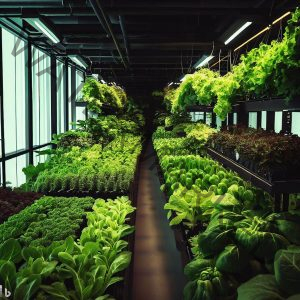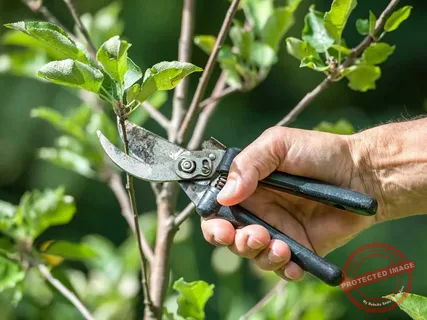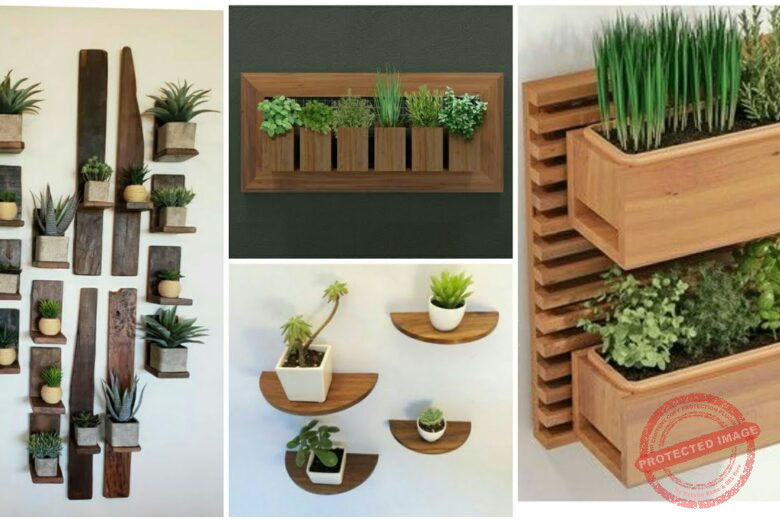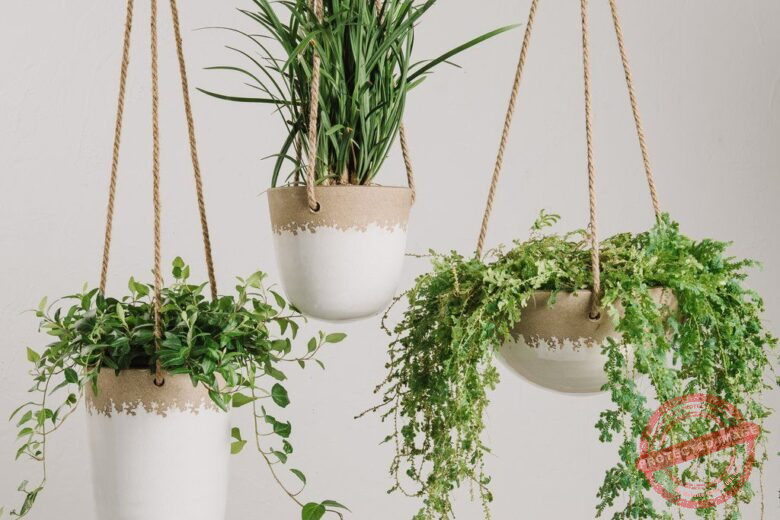In today’s fast-paced world, the desire for fresh and homegrown vegetables has led many to explore indoor vegetable gardening systems. Whether you lack outdoor space or want to have year-round access to your favorite greens, these systems offer a convenient and efficient way to grow your own produce.
Indoor vegetable garden systems enable individuals to cultivate a variety of vegetables, herbs, and even fruits within the confines of their homes, utilizing innovative methods such as hydroponics, aeroponics, and aquaponics. These systems provide year-round access to fresh produce, regardless of outdoor space limitations, offering convenience and sustainability.
13 Best Indoor Vegetable Garden System

1 Hydroponic Systems
Deep Water Culture (DWC): Deep Water Culture is a hydroponic system where plant roots are suspended in a nutrient-rich water solution. An air pump provides the necessary oxygen to the roots, promoting healthy growth. This system is known for its simplicity and efficiency, making it a popular choice among indoor gardeners.
Read Also: [Beginners Guide] How Long Does It Takes Arugula To Grow?
2 Nutrient Film Technique (NFT):
Nutrient Film Technique is another hydroponic system that involves a continuous thin film of nutrient-rich water flowing over the plant roots. The roots absorb the necessary nutrients directly from the water solution. NFT systems are space-efficient and require less water compared to traditional soil-based gardening methods.
3 Wick System:
The wick system is one of the simplest hydroponic systems, making it perfect for beginners. It operates on a passive principle, where a wick transports nutrient-rich water from a reservoir to the plant roots. While it may not be as high-yielding as other systems, the wick system’s ease of use and low maintenance requirements make it an attractive choice.
Read Also: Top 50 Fast Growing Fruits In Pots
4 Aeroponic Systems
Tower Gardens:
Tower gardens are innovative vertical aeroponic systems that maximize space efficiency. In this system, plants are stacked in vertical towers, and nutrient-rich water is delivered to the roots via a fine mist. Tower gardens are ideal for small spaces and offer an elegant way to grow a variety of vegetables, herbs, and even flowers indoors.
Fogponics:
Fogponics is a cutting-edge aeroponic system that relies on fog or mist to deliver nutrients to the plant roots. The fine nutrient mist enhances nutrient absorption and accelerates plant growth. Fogponics systems are known for their efficiency and ability to provide optimal conditions for plant development.
Read Also: [Beginners Guide] How To Grow Butternut Squash Vertically
5 Aquaponic Systems
Aquaponics combines hydroponics with fish farming, creating a symbiotic ecosystem where plants and fish mutually benefit each other. In an aquaponic system:
How Aquaponics Works:
Fish waste produces ammonia, which is then converted by beneficial bacteria into nitrites and nitrates. These nitrates serve as essential nutrients for the plants. The plants, in turn, filter and purify the water for the fish, creating a closed-loop system.
Combining Fish and Plants:
Aquaponic systems offer a sustainable way to grow both fish and vegetables. The fish provide nutrients for the plants, while the plants help maintain water quality for the fish. This natural synergy reduces waste and promotes healthy growth.
6 Vertical Garden Systems
Utilizing Vertical Space: Vertical garden systems capitalize on vertical space, making them ideal for small apartments or homes with limited floor space. These systems can be attached to walls or hung from ceilings, transforming unused areas into thriving gardens.
Read Also: [Beginners Guide] How To Grow Lettuce In Vertical Garden
Living Walls:
Living walls, also known as green walls, are a visually stunning way to integrate plants into interior spaces. They enhance aesthetics, improve air quality, and contribute to a calming atmosphere. Living walls can be customized with various plant species to create a unique and vibrant display.
7. Smart Indoor Garden Systems
Automated Plant Care: Smart indoor garden systems utilize technology to automate plant care tasks. These systems monitor factors such as light, humidity, and nutrient levels. If any parameters deviate from the optimal range, the system adjusts them accordingly. This automation ensures that your plants receive the ideal conditions for growth, even if you’re not a gardening expert.
Read Also: 25 Easiest Vegetables to Grow from Seed
Smartphone Connectivity:
Many smart garden systems are equipped with smartphone connectivity. This feature allows you to control and monitor your indoor garden remotely using a mobile app. You can receive real-time updates on your plants’ status and make adjustments as needed, all from the convenience of your smartphone.
8 Container Garden Systems
Pots and Planters: Traditional pots and planters are versatile options for indoor gardening. They come in various sizes, shapes, and materials, allowing you to choose containers that complement your interior decor. Pots and planters can be placed on windowsills, countertops, or dedicated plant stands.
Read Also: 50 Best Beginner Plants For Gardening [Easy To Grow]
Self-Watering Containers: Self-watering containers are a practical solution for busy individuals or those new to gardening. These containers feature a reservoir that holds water, and a wicking system delivers moisture to the plant roots as needed. This design ensures consistent hydration for your plants, reducing the risk of over- or under-watering.
9 Herb-Specific Garden Systems
Compact Herb Gardens:
Herb-specific garden systems are tailored to growing herbs indoors. These systems usually include multiple compartments for different herbs, allowing you to cultivate a variety of flavors in a limited space. Compact herb gardens are perfect for adding fresh herbs to your culinary creations.
Integrated Herb Kits:
Some indoor garden systems feature integrated herb kits with built-in LED lights. These lights mimic natural sunlight and provide the essential light spectrum for optimal plant growth. Integrated kits are ideal for individuals who want to grow herbs year-round, regardless of indoor lighting conditions.
Microgreens Growing Kits
Nutrient-Packed Microgreens: Microgreens are young, edible plants harvested at an early stage of growth. Despite their small size, microgreens are packed with nutrients and flavors. They’re easy to grow indoors and add a gourmet touch to salads, sandwiches, and dishes. Microgreens come in various colors and flavors, allowing you to experiment with different varieties.
Microgreen Growing Process: Microgreens can be grown using soil or hydroponic systems. You’ll start by sowing seeds densely in a shallow container. After germination, the plants are allowed to grow for a few weeks before being harvested. Microgreens are known for their rapid growth, making them a rewarding choice for impatient gardeners.
10 Indoor Greenhouse Systems
Creating a Controlled Environment: Indoor greenhouse systems provide a controlled environment for plants to thrive. These setups typically feature adjustable lighting, temperature, and humidity settings. Creating optimal conditions allows you to grow a wider range of plants, including those that require specific climates.
Year-Round Growing: With an indoor greenhouse, you can enjoy gardening throughout the year, regardless of outdoor weather conditions. This is especially beneficial for gardeners who live in regions with harsh winters or extreme heat. Year-round growing ensures a constant supply of fresh produce.
11 Hybrid Indoor-Outdoor Systems
Transitioning from Indoors to Outdoors: Some garden systems are designed for easy transition between indoor and outdoor environments. This flexibility enables you to start plants indoors during unfavorable weather and move them outside when conditions improve. It extends the growing season and increases the variety of plants you can cultivate.
Extendable Growing Seasons: By starting seeds indoors and later transferring them outdoors, you can extend the growing season for certain crops. This technique is particularly useful for plants that require a longer growing period or are sensitive to cold temperatures. You’ll enjoy a bountiful harvest without being limited by your local climate.
DIY Indoor Garden Ideas
Upcycled Planters: DIY indoor gardens allow you to get creative with plant containers. Upcycled items such as mason jars, wooden crates, and tin cans can be transformed into unique planters. This approach not only adds a personalized touch to your indoor garden but also promotes sustainability by repurposing materials.
Creative Plant Displays: Arrange your indoor garden in creative and visually appealing ways. You can create plant wall art, hanging gardens, or tiered displays using shelves or plant stands. Creative plant displays serve as decorative focal points while optimizing space utilization.
Maintenance and Care Tips
Light and Water Requirements: Different plants have varying light and water requirements. Research the specific needs of the plants you’re growing and place them in locations that receive the appropriate amount of sunlight. Similarly, water your plants according to their preferences to prevent over- or under-watering.
Pruning and Harvesting: Regular pruning promotes healthy growth by removing dead or yellowing leaves. It also encourages branching and new growth. Harvesting is an important aspect of indoor gardening, as it ensures you enjoy produce at its peak flavor and nutritional value. Follow guidelines for each plant type to optimize pruning and harvesting practices.
12 Choosing the Right Indoor Garden System
Considerations for Selection: When choosing an indoor garden system, consider factors such as available space, budget, and your gardening goals. If you’re a beginner, opt for user-friendly systems that require minimal maintenance. If you’re an experienced gardener, explore advanced options that offer customization and control.
Matching System to Space: Ensure that the chosen system fits well within your available indoor space. If you have limited room, consider vertical or compact systems. For larger spaces, explore options like indoor greenhouses or hybrid systems that provide versatility in growing.
13 Understanding Indoor Vegetable Garden Systems
Indoor vegetable garden systems are innovative solutions that enable you to grow various types of vegetables, herbs, and even fruits within the confines of your home. These systems utilize different cultivation methods, from hydroponics and aeroponics to aquaponics and smart garden technology. The choice of system depends on your available space, budget, and gardening expertise.
Benefits of Indoor Vegetable Gardening
Indoor vegetable gardening offers a plethora of benefits. It provides a continuous supply of fresh produce, reduces the need for store-bought vegetables, and allows you to control the growing conditions, minimizing the use of harmful pesticides. Moreover, indoor gardening can be a therapeutic and enjoyable activity that brings nature indoors.
Key Factors to Consider Before Choosing a System
Before diving into indoor gardening, it’s important to consider several factors. Evaluate your available space, the types of vegetables you want to grow, and your commitment level to maintenance. Additionally, assess your budget and whether you’re interested in a hands-on approach or prefer a more automated system.
Maintenance and Care Tips
Light and Water Requirements: Different plants have varying light and water needs. Pay attention to these requirements for healthy growth.
Pruning and Harvesting: Regular pruning encourages new growth, while harvesting at the right time ensures the best flavor and nutritional value.
Grow Lights: Illuminating Your Garden’s Potential
Indoor plants rely on artificial lighting. Grow lights provide the necessary spectrum of light for optimal growth.
Understanding Grow Light Types
Different plants require different light spectra. LED grow lights are energy-efficient and can be tailored to specific plant needs.
Creating an Optimal Light Schedule
Most indoor plants need 12 to 16 hours of light per day. Use a timer to ensure consistent lighting and avoid overexposure.
Maintaining Your Indoor Garden: Watering, Nutrients, and Pruning
Proper maintenance is crucial for the success of your indoor garden.
The Art of Proper Watering
Overwatering and underwatering can harm plants. Learn to gauge your plant’s water needs and adjust accordingly.
Nutrient Requirements for Indoor Plants
Plants need essential nutrients for growth. Consider using balanced liquid fertilizers or specialized hydroponic nutrient solutions.
Pruning for Healthy Growth
Regularly prune dead or yellowing leaves to encourage new growth. Pruning also helps manage the plant’s shape and size.
Common Challenges and How to Overcome Them
Indoor gardening comes with its challenges, but they can be managed effectively.
Dealing with Pests in Closed Environments
Inspect plants regularly for pests like aphids and spider mites. Use organic insecticides or introduce natural predators.
Preventing Mold and Mildew
Ensure proper air circulation and avoid overwatering to prevent the growth of mold and mildew. Use fans and dehumidifiers if needed.
DIY Indoor Gardening: Crafting Your Personal Garden
If you’re feeling creative, you can craft your indoor garden systems using recycled materials.
Upcycling Containers for Planting
Reuse containers like bottles, jars, and wooden boxes for growing plants. Just ensure proper drainage and sufficient space for roots.
Building a Small-Scale Hydroponic System
Construct a basic hydroponic system using materials like PVC pipes, buckets, and an aquarium air pump. This DIY approach is cost-effective.
Cost Analysis: Investing in Freshness
The cost of setting up an indoor garden varies based on the system you choose. Consider factors like initial setup costs, ongoing maintenance, and potential savings on store-bought produce.
Environmental Impact: Reducing Your Carbon Foodprint
Growing your own vegetables indoors reduces the carbon footprint associated with long-distance transportation and excessive packaging.
Is indoor gardening suitable for beginners?
Absolutely! There are various indoor gardening systems designed with beginners in mind. Start with simple systems like container gardening or hydroponics.
How much time does indoor gardening require?
The time commitment varies depending on the system and plants you choose. While some systems require more attention, others are more automated and need less maintenance.
Can I grow vegetables in low-light conditions?
Yes, you can choose low-light-tolerant plants like lettuce, spinach, and herbs for areas with limited natural light. Alternatively, you can use artificial grow lights.
Do I need to use pesticides for indoor gardening?
Indoor gardening systems are less susceptible to pests, but it’s still possible. Use organic pest control methods like neem oil or introduce natural predators.
Can I use recycled materials for indoor gardening?
Absolutely! Upcycling containers and materials for planting is a creative and eco-friendly approach to indoor gardening.
What are the best vegetables to grow indoors?
When it comes to indoor gardening, leafy greens like lettuce, spinach, and kale are excellent choices due to their compact growth and minimal light requirements. Herbs such as basil, mint, and parsley thrive indoors, providing fresh flavors for your culinary creations. Additionally, compact varieties of tomatoes, peppers, and radishes can also be successfully grown indoors.
Best Indoor-Garden Kits
For those looking to kickstart their indoor gardening journey, a variety of indoor-garden kits are available. The AeroGarden Bounty Elite offers LED grow lights and touchscreen controls for efficient plant growth. The Click and Grow Smart Garden 9 is known for its pre-seeded plant pods and automatic watering system. Alternatively, the Back to the Roots Water Garden combines aquaponics with herb cultivation for a sustainable mini ecosystem.
Indoor Garden Kits for Beginners
All-in-One Solutions: Indoor garden kits for beginners provide a convenient way to start your indoor gardening journey. These kits often include everything you need to get started, such as seeds, growing medium, and instructions. They’re designed to simplify the learning curve and help you achieve successful plant growth from the outset.
Starter Plant Varieties: Many beginner kits focus on easy-to-grow plants such as herbs, lettuce, and small vegetables. These plants require minimal maintenance and are resilient to common mistakes made by new gardeners. Starting with these plant varieties can boost your confidence and set you up for gardening success.
Which is the easiest vegetable to grow at home?
Among the easiest vegetables to grow at home, lettuce stands out. Its rapid growth and shallow root system make it suitable for containers and hydroponic systems. Radishes are also a beginner-friendly choice due to their quick germination and compact size, making them perfect for limited indoor spaces.
What vegetables are grown indoors year round?
Several vegetables can be grown indoors year-round, ensuring a continuous supply of fresh produce. Leafy greens like lettuce, spinach, and Swiss chard thrive in indoor environments. Herbs such as basil, mint, and chives also flourish throughout the year, providing a constant source of aromatic flavors for your dishes.
Can you grow vegetables indoors with LED lights?
Yes, you can successfully grow vegetables indoors using LED lights. LED grow lights provide the specific light spectrum that plants need for photosynthesis and growth. They are energy-efficient and can be adjusted to match different plant growth stages, making them an ideal choice for indoor gardening.
How many hours of light do indoor vegetables need?
Indoor vegetables typically require 12 to 16 hours of light per day to mimic natural sunlight and support healthy growth. Using a timer to ensure consistent lighting is crucial. Providing this light duration helps plants achieve optimal photosynthesis, leading to robust foliage and better yields.
Conclusion:
Indoor vegetable garden systems offer a world of possibilities for cultivating your own fresh produce. Whether you’re a seasoned gardener or a beginner, there’s a system that suits your space, preferences, and lifestyle. By bringing nature indoors, you not only enjoy the benefits of homegrown food but also create a sustainable and fulfilling hobby.




2 Replies to “25 Best Indoor Vegetable Garden System”